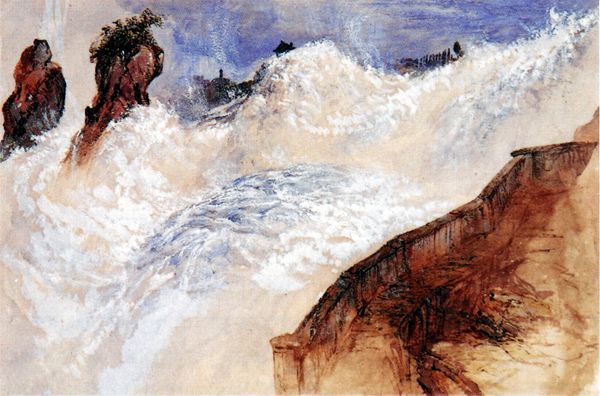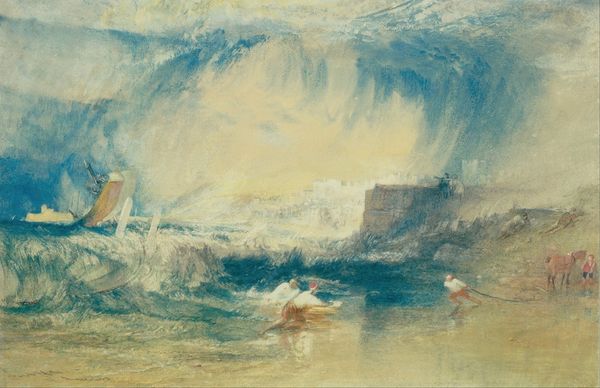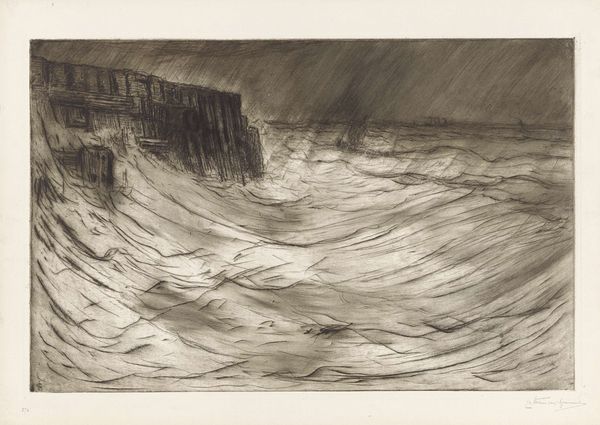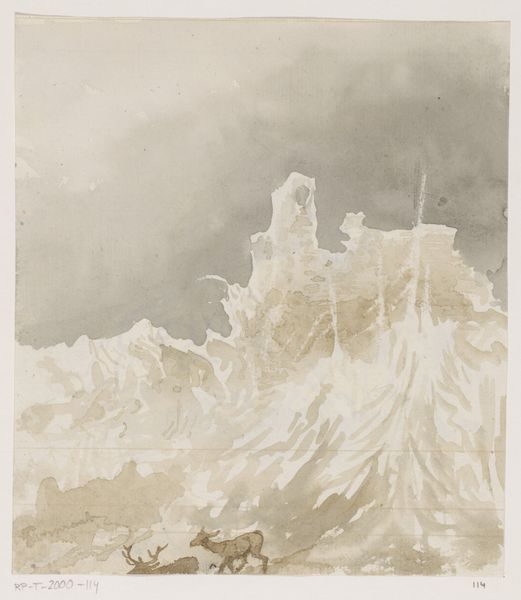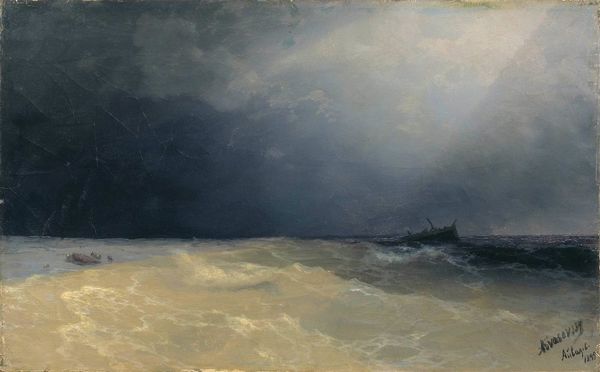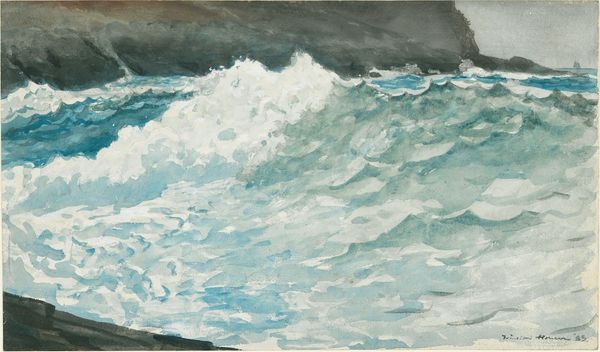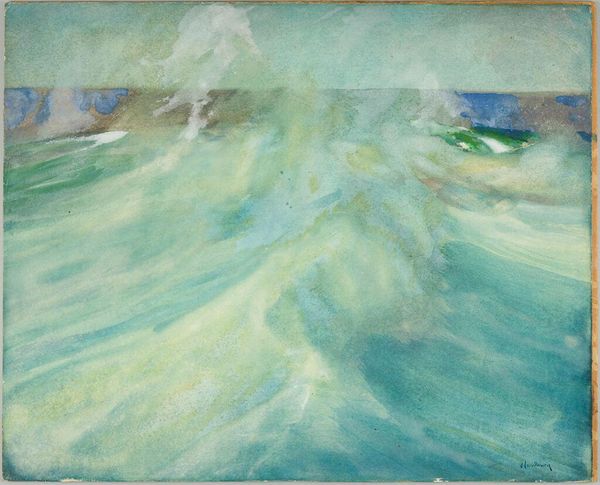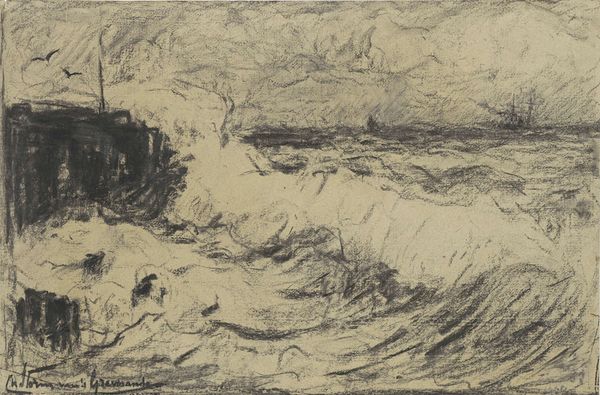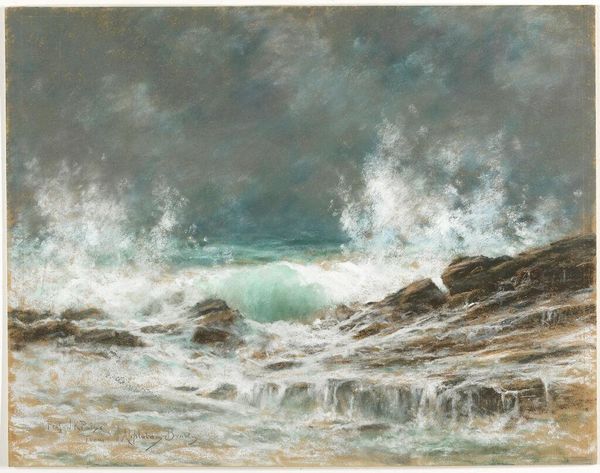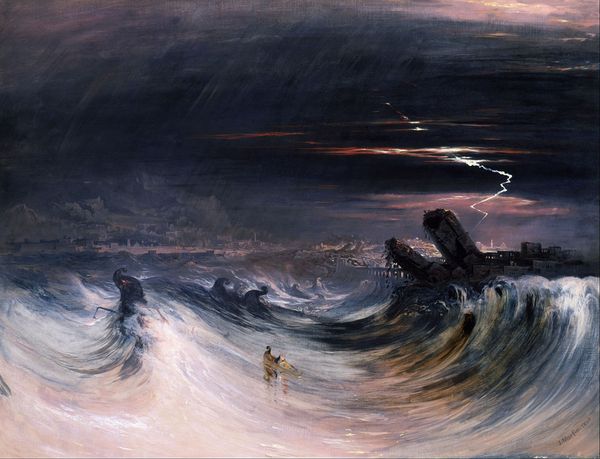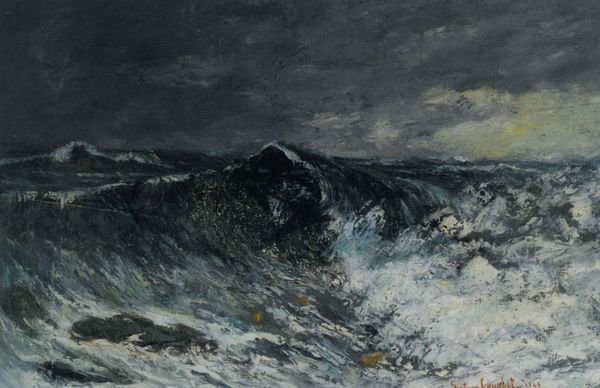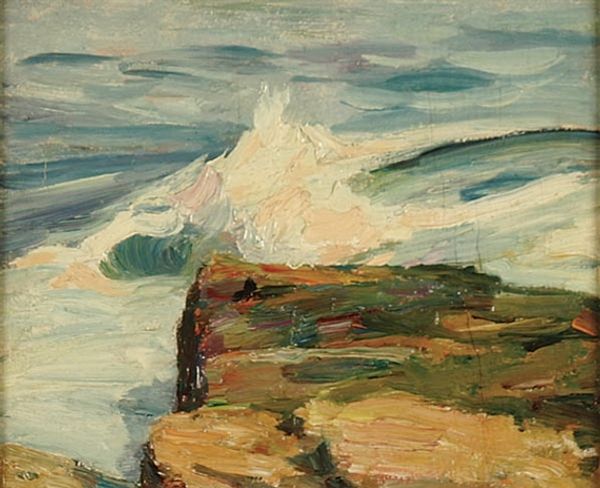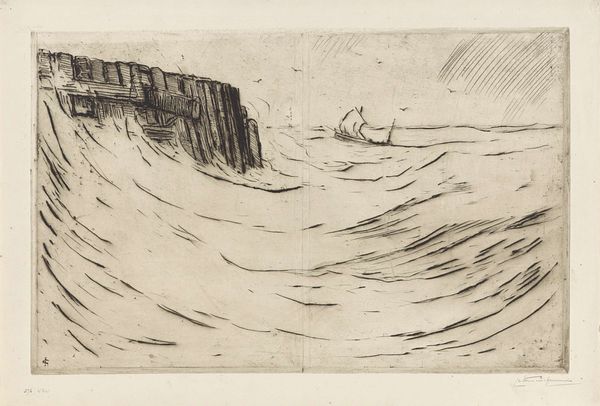
Dimensions: 31.4 x 47.3 cm (12 3/8 x 18 5/8 in.)
Copyright: CC0 1.0
Curator: Here we have John Ruskin's "Falls of Schaffhausen," held in the Harvard Art Museums collection. I’m struck by the watercolor's turbulent energy. Editor: Immediately, I notice the textural interplay, the rough rock formations juxtaposed with the churning water. It speaks volumes about the natural forces at play. Curator: Ruskin was fascinated by the sublime power of nature. Waterfalls, like cathedrals, embodied, for him, the divine made visible. These churning falls carry echoes of Romanticism's fascination with the overwhelming force of the natural world. Editor: Absolutely. And the materials – the paper support, the way the watercolor pigment interacts with it – it all suggests a very specific mode of artistic production, a dialogue between the artist, the environment, and the available resources. It’s about both observation and creation. Curator: Indeed. Ruskin's intense observation of nature, his almost scientific approach, was always infused with a deep spiritual resonance. These falls aren't just water; they symbolize something far grander. Editor: Considering its scale and the delicate washes, it feels intimate, immediate – like Ruskin himself was trying to wrestle the sublime into something he could hold. Curator: A fitting paradox for an artist grappling with the uncontainable. Editor: Definitely something to consider.
Comments
No comments
Be the first to comment and join the conversation on the ultimate creative platform.
